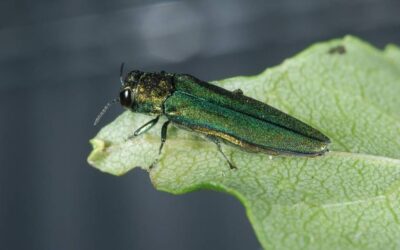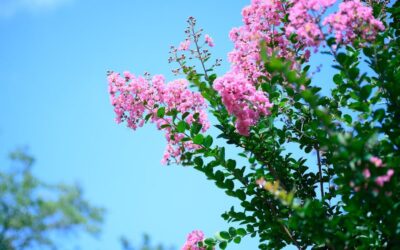Blog Topics
“Are my boxwoods dying?”
That’s a common question we hear from property owners, especially during dry winters. If the property owner has done some research, the next question may be, “Is it boxwood blight?”
While boxwood blight is a common issue with boxwoods in our area, other factors can lead to boxwoods looking brown, sickly, or injured.
In this article, we will go over some of the common ailments of boxwood shrubs and what you can do to care for these valuable landscape plants.
Are Your Shrubs Really Boxwoods?
Before we go into the issues that boxwoods face, determine that the shrub on your property is actually a boxwood. Boxwoods are any of the Buxus species, often grown as a hedge or shrub in planting beds.
Some varieties are native to Japan and Korea, while others originate from Europe. They are evergreen shrubs that don’t do well in cold weather, though some cultivars have improved their cold hardiness.
Common boxwoods include:
- Littleleaf boxwood (Buxus microphylla)
- Japanese boxwood (Buxus microphylla japonica)
- Common or English boxwood (Buxus sempervirens)
- Korean boxwood (Buxus sinica insularis)
- Many types of hybrids, including the cultivars ‘Green Gem,’ ‘Green Mound,’ ‘Green Mountain,’ and ‘Green Velvet.’
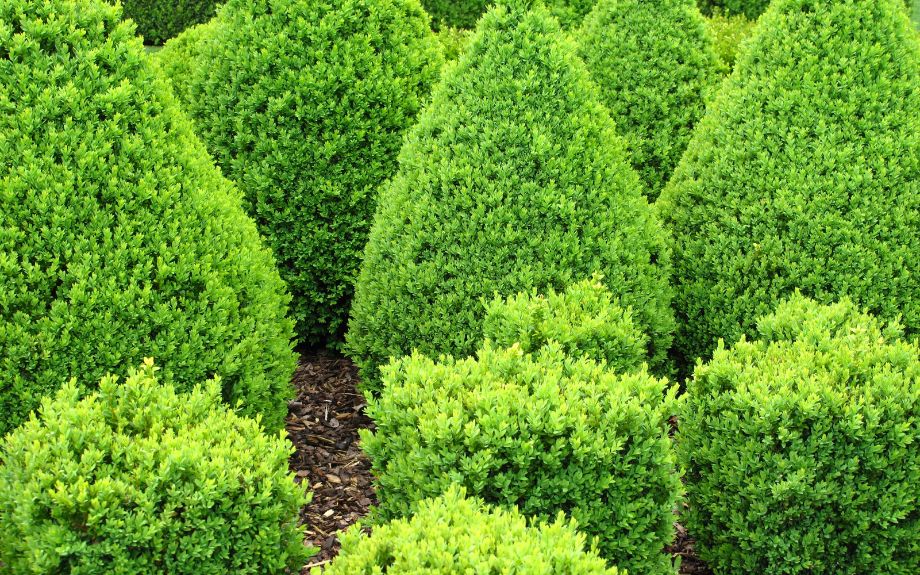
Common boxwood issues
Below are some of the most common issues that impact boxwoods, including weather, pests, fungi, and diseases.
Winter Injury
During the winter months, boxwoods can:
- Dry out from harsh winter winds (called desiccation).
- Have branches break from heavy ice or snow, causing sections of the shrub to die.
- Experience tissue death from the lack of available water in the ground
- Thaw rapidly during rapid temperature drops, leading to bark splitting
- “Burn” their leaves from exposure to too much winter sun
These common winter problems can show up as yellowing or browning leaves, orange “burnt” edges of the leaves, broken and dying sections of the plant, loss of bark, and more.
To prevent winter injury, plant boxwoods in areas of your yard where they will be protected from cold winter winds, such as next to a wall. You can also wrap the shrubs with burlap or create a wind barrier out of plastic or another material.
Keep boxwoods well-watered in the fall and winter to prevent them from drying out. Water when the ground is no longer frozen. However, don’t overwater the plants as they don’t do well in sitting water.
To prevent damage from snow or ice, don’t plant boxwoods in areas where snow will fall off a roof or other structure. You may use twine to wrap around established boxwood plants to help them maintain their shape throughout the winter – just be sure to remove the twine in early spring, so you don’t harm the plant.
To prevent sun damage to the boxwood leaves, ensure your boxwoods are planted in partial shade. Boxwoods do better when planted with an east or north exposure as it protects them from the winter sun.
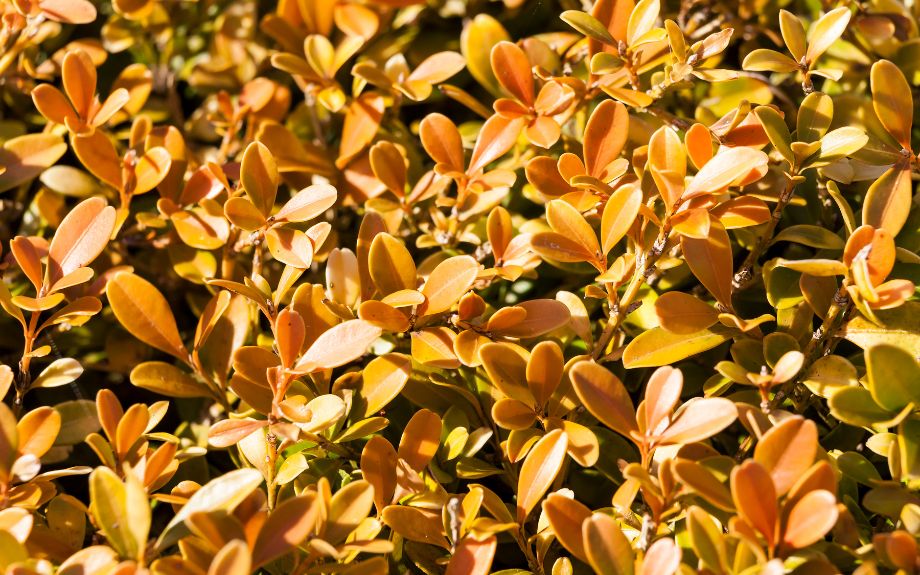
Most Common Boxwood Disease: Boxwood Blight
Boxwoods suffering from boxwood blight will have:
- Spots on the leaves
- Leaves turning brown
- Dropping leaves (starting at the bottom of the plant and moving upwards)
- Black cankers or lines on green stems
Boxwood blight is caused by a fungus, which can be spread from the infected leaves of other plants. If your boxwoods have boxwood blight, the plant (and all leaves) should be removed.
Learn more about boxwood blight and how to prevent it in this article >>
Other Boxwood Diseases
While boxwood blight is the most common boxwood disease, other diseases can cause damage to your boxwoods.
Root Rot
Fungal pathogens can infect the root systems of boxwoods, leading to root rot. Symptoms include:
- Yellowing leaves that curl
- Poor growth rate
- Discolored wood near the base of the boxwood
To treat root rot, you need to increase the drainage, so the boxwood isn’t sitting in water. This may include soil amendments or even moving the plant to a location with better drainage.
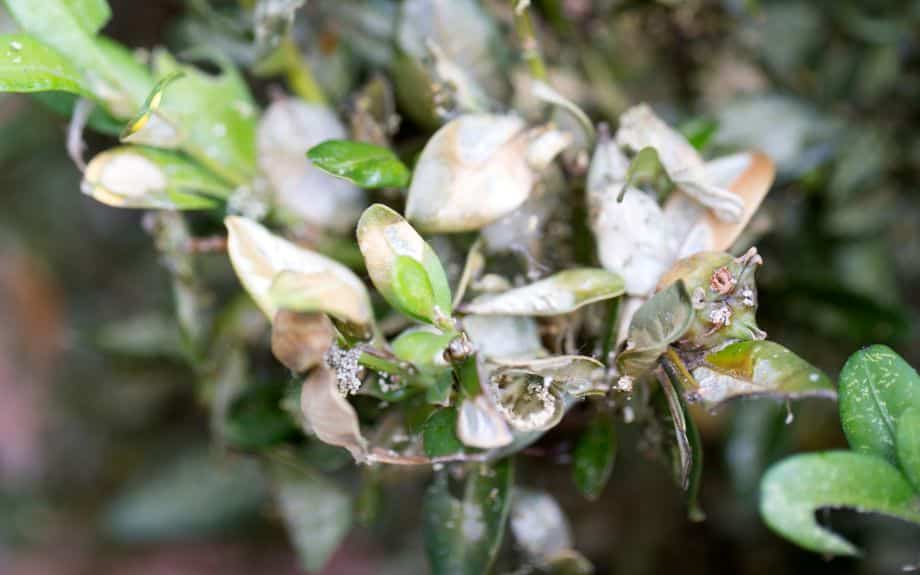
Volutella Stem Blight or Canker
If new spring leaves are turning yellow from red and have some pinkish growths on the leaves, Volutella blight may be the cause.
Boxwoods suffering from Volutella stem blight or canker may also have loose bark and girdling branches along with the spores of fungus.
Since fungal problems point to too much moisture, you can prune the shrub back to increase airflow to the plant. Pruning out the infected branches may be another temporary solution. Spraying a fungicide in early spring may be necessary to control or eliminate Volutella blight.
Keeping your boxwoods stress-free is a good way to prevent Volutella blight, as it tends to attack stressed or weakened plants.
Macrophoma Leaf Spot or Macrophoma Blight
If your boxwood leaves are yellow or light orange and have black dome-shaped spots, your boxwood might be suffering from macrophoma leaf spot.
This issue is more cosmetic than dangerous. Consider treating with neem oil if the entire boxwood is covered with the spots. Oftentimes, the spots will go away on their own.
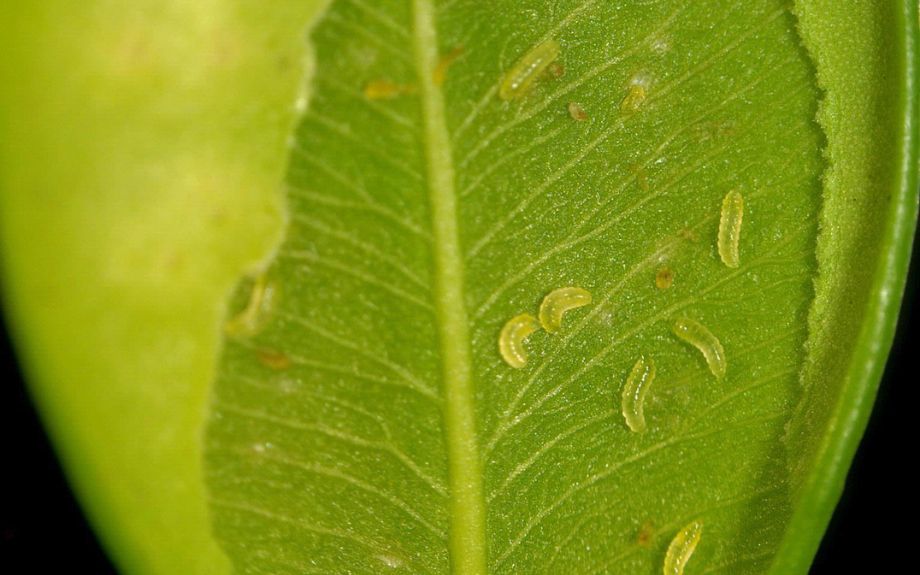
Close up of boxwood leaf broken open to show leafminer larvae. Image courtesy of Brian Kunkel, University of Delaware, Bugwood.org.
Most Destructive Boxwood Pest: Boxwood Leafminer
The boxwood leafminer is a fly, but the larvae of this fly will feed on the leaf tissue of boxwoods. The name “leafminer” comes from their ability to create mines through the leaves as they feed on the leaves. These mines can be spotted on the underside of boxwood leaves.
Other Boxwood Insect Pests
Boxwood leafminers are not the only pests that can impact boxwoods.
Boxwood Psyllid
If your boxwood’s leaves become cup-shaped, it may be infected with the boxwood psyllid. This piercing-sucking insect can spend the winter on a boxwood plant (usually as an egg) and then hatch into a nymph in spring, infesting the leaves.
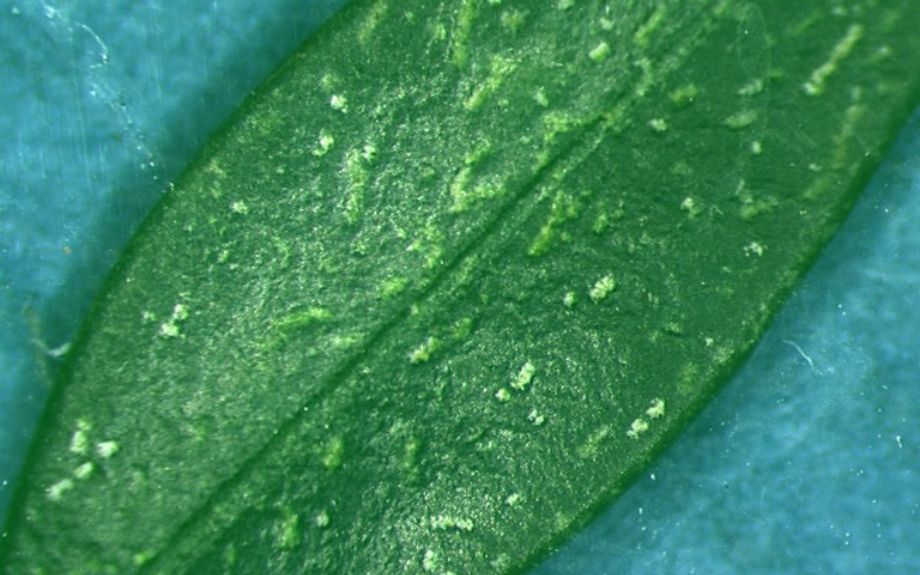
Close up of spider mite damage to a boxwood leaf. Image courtesy of Rayanne Lehman, Pennsylvania Department of Agriculture, Bugwood.org.
Boxwood Mite
A type of spider mite that impacts boxwoods is the boxwood mite. If your boxwood’s leaves look stippled or gray and unhealthy, this mite may be to blame. The boxwood mites are either yellowish-green or red and are only half a millimeter long. The mite’s eggs spend the winter on boxwood leaves and hatch around April.
Most often, you can spray off spider mites with a garden hose. In some cases, horticultural oil or insecticidal soap may be necessary.
Oystershell Scale
Yellow, wilting leaves or dead branches could point to oyster shell scale, an insect that leaves a 3-millimeter brown or grayscale shaped like an oyster shell on the bark of branches.
Pruning out infected branches and applying dormant oil in late winter or horticultural oil in late spring or early summer may help control this pest.
Oystershell scale is rarely an issue, but in some instances can negatively impact boxwoods.
Box Tree Moth
Though not as common, box tree moths are a potential threat to boxwoods. They are invasive insects native to Asia. The caterpillars can eat the leaves, moths lay eggs on the underside of the leaves, and the foliage can then die and/or turn brown. Look for webs and moth excrement to determine if box tree moths are the cause.
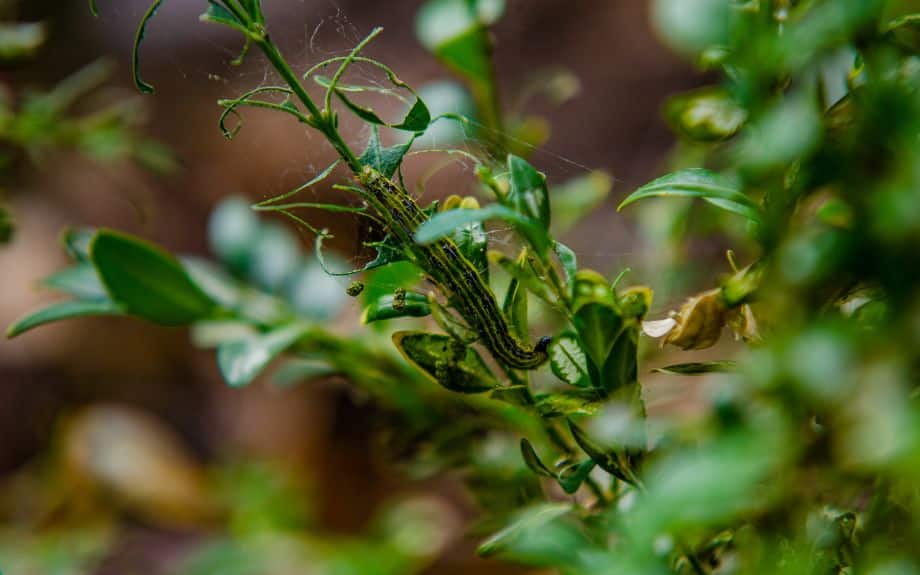
Other Steps to Keep Your Boxwoods Healthy
Preventing the above issues is the best way to keep your boxwood shrubs healthy. Consider some of the options below to give your boxwoods the best chance of survival.
- Plant boxwoods in a location that has good drainage
- Plant boxwoods in partial shade
- Incorporate organic matter into the soil when possible
- Use organic mulch to keep roots cool and moist
- Protect boxwoods from winter winds, sun, and cold
- Water your boxwoods in the fall to prevent winter desiccation
- Prevent stress on your plants
Still Have Questions or Concerns? Riverbend Landscapes and Tree Service Can Help!
If you are concerned about the health of your boxwoods or want to look into preventive plant health care or treatment options for boxwood issues, contact Riverbend Landscapes and Tree Service.
Give Us a Call at 703-402-9366
If you'd like help with your trees or landscape, have any questions, or would like to schedule an appointment with one of our Certified Arborists, please give us a call. We'd love to hear from you!

